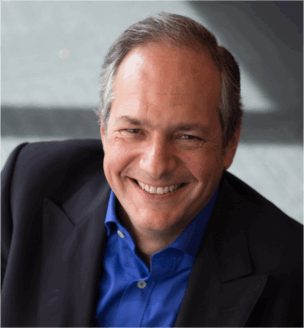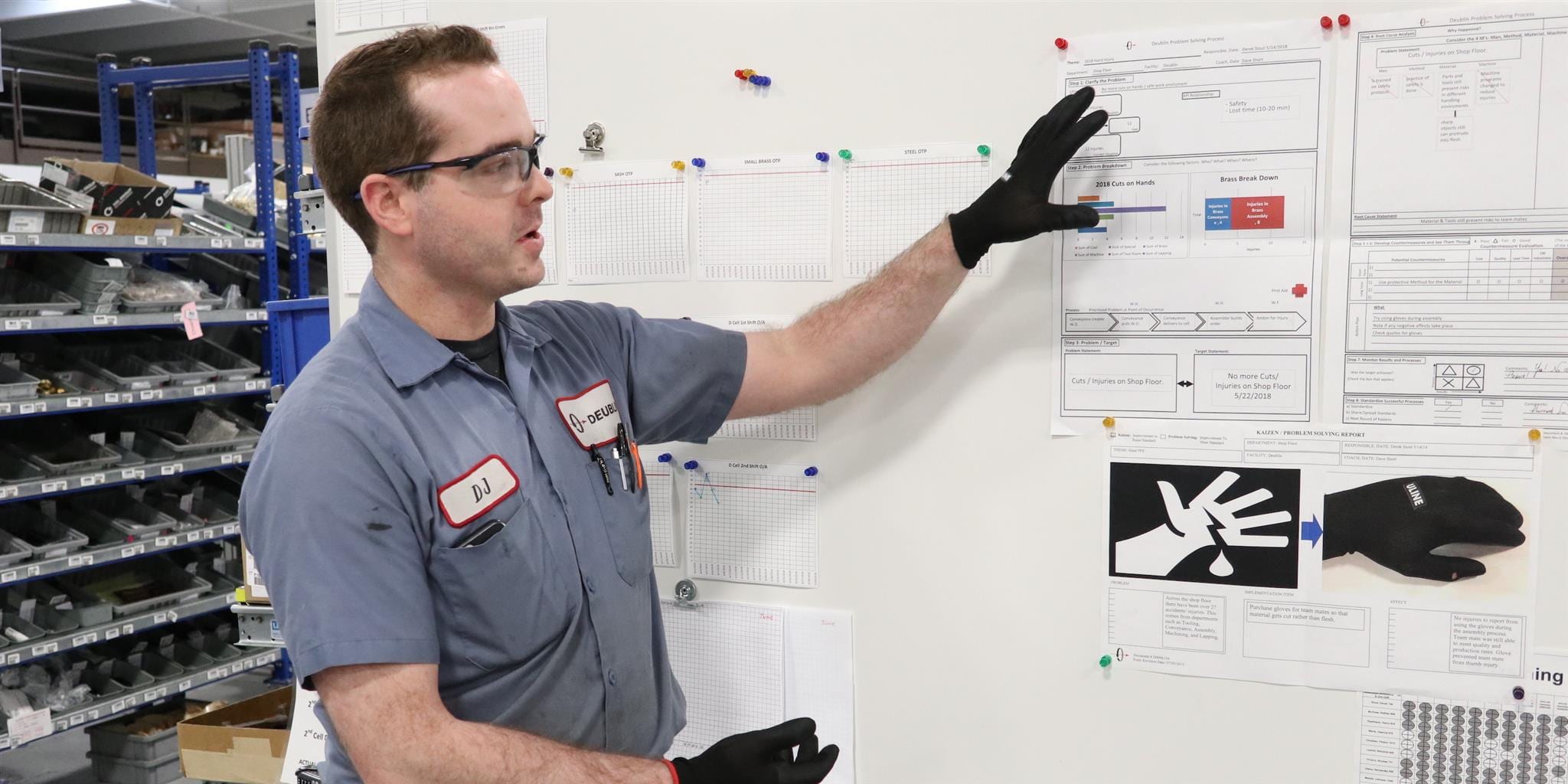
My father is my sensei
FEATURE – In this intimate account, the author reflects on the role of a lean sensei by looking back at what he’s learned from his own… his father.
Words: Michael Ballé, lean author, executive coach and co-founder of Institut Lean France.
My father is my sensei. It happened by accident, not by design. Back in 1975, he was in charge of product planning at Renault, when he discovered Toyota. He visited one of their plants and saw right away they were doing something radically different. (In a recent article for Planet Lean, John Shook shared some great reflections on the evolution of lean thinking and included Freddy among the Western pioneers of lean thinking). Last summer, I had the good fortune to meet with Mr. Takehiko Harada, an Ohno alumni author of Management Lessons From Taiichi Ohno and he remembered being asked to take a group of French people around the shop in the mid-1970s – the first time French people had ever showed up in Toyota. We laughed as we realized he’d probably met my dad then. A small world. “They didn’t see anything, even when we showed them,” recalled Mr. Harada. No wonder.
This visit completely changed my father’s outlook, and his subsequent career. Originally a marketing guy, he became interested in process, ended up running industrial engineering, then Renault’s truck operations. He then was Industrial VP at Valeo, a large auto supplier, and then CEO of Sommer Allibert, another parts supplier later acquired by Faurecia. All this time, he visited Toyota yearly, got passionate about Japanese culture, learned the language, and dragged me to martial arts classes. I hated it, and to this day bear the scars (one day I let go of the bow rather than the arrow… picture that).
Growing up, our relationship was fraught. He wanted me to study as an engineer – at the time France’s traditional path to a successful career – but I wanted to be a writer. I dragged myself to engineering school, got kicked out, ended up living on a desert island in the West Indies… and came back. I’d picked up an interest in cognitive sociology, which was “in” before neuroscience exploded on the field – and started working on a PhD. I’d never paid much attention to what my father was doing at work until one day I told him I was looking for a field case for my research on “mental models” – I was looking for people who’d look at the same object but disagreed on what they saw, which is rarer than you’d think. People disagree all the time about everything but tend to share the same implicit outlook.
This is how I ended up studying the work he was doing with Toyota as Industrial VP of Valeo and part of the Toyota Supplier development program. Toyota was globalizing madly, setting up shop in Europe (as well as the US at the time) and trying to replicate its supplier approach, not without serious setbacks. One day, frustrated with all my questions about their “roadmap”, a Toyota engineer told me: “We don’t have a roadmap, we solve problems one after the other. We do have a golden rule, though: we make people before we make parts.” That completely threw me. I started listening in earnest.
The Toyota guys persuaded me that if I wanted to understand this stuff for real I couldn’t just observe – I had to practice. I had a first job teaching in business schools at the time, so I doubled it by moonlighting with one of the earliest “lean” consultancies (the term hadn’t quite crossed the ocean yet) at the time and discussing what I saw with my father. Seven years later, when he retired from his role at Faurecia after the acquisition, we decided to start consulting together. I gave up teaching (thankfully) and started working with him on the gemba.
When we started coaching executives on the gemba together, I’d been writing and teaching and consulting on management for a while. I’d published four management books. I’d experimented with Deming (running the red bead experiment with clients), systems thinking, Value Stream Mapping (can’t count the post-its on brown paper flow workshops I ran), and so on. I was reading every book I could find on the emerging lean literature. My dad knew Dan Jones, who’d kindly agreed to mentor me as well.
It was a shock to realize I knew everything and understood nothing. Like the proverbial student who watches the master continue to pour tea in the cup while the cup is already full and the tea spills all over, my mind was so filled with ideas I was hearing nothing. I later met a French production manager who’d left au automaker to work for Toyota’s Valenciennes plant and who describe the experience as “Ctrl-Alt-Delete” – forget everything you think you know, the thinking process is just different. I laughed because the same had happened to me working with my dad.
I didn’t know how to look on the shop floor. I was happy discussing with management teams in the meeting room about what was going on and what should be done, and every single time my father got impatient (bored, I think, he’d had his share of such pointless debates) and took us back to the gemba. What we saw there was always something else. Every single time. Plus, I learned that I did not know how to look into a process at detailed level. I gave it a quick superficial glance. My dad would stay at least a few minutes to watch several cycles and see how the process differed minutely from one cycle to the next. I had to learn to see the difference between normal and abnormal. This is not natural as spontaneously we normalize everything. Distinguishing abnormalities is an acquired skill, and it takes effort.
I didn’t understand quality at all. I thought that quality was all about measuring defectives, identifying the top causes in the Pareto analysis and solving them. It took me a while to realize that my father’s obsession with quality started with the product. What do customers expect to work as a matter of course and never break down? What do customers interpret visually as “quality work”? How do we see this in the assembly process? In this sense, every abnormality is interesting and the issue with quality is not measuring at final inspection, but spotting the defects within the process as they are being introduced into the product. My dad’s outlook was that sales were driven by quality. Period. First fix quality.
I was wrong about costs. I’d build up some notion that TPS was not about cost cutting but developing people. My father, a hard-nosed businessman, always smiled at this. Reducing cost is human development, he’d say. Not cutting cost budget line by budget line without any idea of what the process behind that cost was, of course, but sharing with every person the “one step, one second, one cent” idea that every muda has a cost. The fist cost my father taught me to see was the cost of capital. Time and time again, he showed me how reducing on-paper cost of an injection press by doing less changeovers and producing more had huge costs in terms of underutilization and buying extra presses to cover variety. Secondly, he taught me to look at the hidden costs of stupid purchasing decisions and poor procurement. To fix quality, he’d first look at the material or parts supply and see how quality was handled there. I had to learn the difference between cost reduction, which happens through good gemba management and cost cutting from accounting, which usually has the opposite effect.
It’s all about the Kanbans. My dad told stories about his discoveries of Kanban in Toyota in Japan early on, but it took me about two years to accept how profoundly Kanban changes any operation. As a management thinker, I thought that good management would fix anything. So I focused on visualizing the shop floor and problem solving: can the teams see what they have to do? Can they see their own problems? Do they show what they’re currently working on? Do they show the next change they’re envisaging? That sort of thing. My dad would shrug and say, “You’ll exhaust them without Kanban. You’re making then look for the North without a compass.” Eventually I learned to pull processes with Kanban, and indeed saw the light. I can’t explain it. Learn to use a Kanban and see for yourself. It’s night and day: there is before, and there is after.
Formulate hypotheses and test them. Dad had shown me the first A3s he’d brought back from Japan when I was still in school, because he’d found them amusing, and I still remember being intrigued by these sheets of paper formatted like a manga covered in small handwriting and technical drawings – not sure how this made things clearer in any way. Later on, the lean movement started to learn more about A3s, with the set order of boxes and so on. My father essentially looked for was the hypothesis testing. Where is the process diagram, the point of cause where things go wrong, the suspected factors and most importantly the test method for each factor. Like many of the other sensei I’ve come across since, he was not that interested in solutions unless they were really clever. He really wanted to see how each hypothesis had been rigorously tested – and how wrong thinking was progressively discarded.
It’s all about the team. Where is the team? Which team is this guy part of? What’s wrong with the team? This is one lesson I struggled with for a long time. My dad would rarely listen about a problem someone had in isolation without first asking about the team this person was part of and what was the team doing to help or hinder. In France’s collectivist/individualistic culture, this focus on teams was simply weird. No one over here ever thinks in terms of teams – there is only individual achievement within collective norms. My father had seen something in Japan about teams, which, as time goes by, I can attest is the key to solving most problems. Fix the team first, let the team solve the problem. That was a deep and hard lesson I’m still working on today.
TPS is only the beginning. The real challenge lies in engineering. Because he visited one plant a week, my father developed a reputation for being a “shop floor CEO”. Truth is, his major concerns were with product engineering. His winning strategy as a CEO was to convince higher-priced automakers to purchase his parts, mostly by improving both visual and functional quality whilst keeping within the cost range of his original customers. This didn’t happen overnight and took a lot of hard work. He saw plants as the main source of ideas to improve engineering quality: by fixing problems in the process he opened improvement areas for the product. By being very challenging on the product, he led to radical improvements in the process. Organizations being mainly functional, few people saw what he was trying to do but he badgered me about engineering from day one. In 2005, we wrote up his understanding of Toyota’s engineering approach. To this day he wants us to write a fourth tome to The Gold Mine trilogy about product engineering, but inspiration hasn’t come yet. TPS, in effect, is mostly a bag of tricks to visualize lead-time in processes and discover what needs to be improved. But this is only the lobby to the real competitive edge, which is applying the learning to product and process design, as splendidly illustrated in Jeff Liker and Jim Morgan’s Designing The Future.

“Listen more.” In the end, that was my dad’s most continuous advice. Every time I came to him with a business situation I didn’t understand, I’d ask: “What am I supposed to tell them?” He’d invariably answer: “Listen to them. Make them talk, listen more.” This is unexpected from someone who was known for his strong opinions and fast assumptions, that is until you saw him change his mind suddenly and frequently. It took me years to realize that his strongly expressed views were hypotheses he was testing by saying them out loud, not definitive conclusions. Unfortunately, I fear that I have picked up this habit, which is not great for social getting along, but an incredibly powerful way to move forward. By expressing a stark hypothesis you can listen hard to how people react and reflect about what they have in mind. When someone says something that sounds wrong, my dad taught me to ask myself: what do they see that I don’t see? What do they know that I don’t know?
In true sensei fashion, he was never a fan of theorizing. He really enjoyed writing the business novels together, but (he is kind enough not to say it so loudly anymore) he is quite bored with my other business writing. He feels that whatever general conclusions I draw from learning on the shop floor are up to me and generally somewhat above my paygrade. Truth is, he doesn’t care about making it all fit together. What he cares about is figuring out the situation and what concrete next step we can take to make things better – how do we line up to the right outputs to improve the outcome.
For many years I thought I was just, well, him. You know, dad. But then I started meeting other senseis and listening to sensei stories from the other pioneers in the lean field such as Art Byrne, Orry Fiume, Art Smalley and others and discovered that this wasn’t just my father, but a whole new way of teaching and learning. Sensei-ing is different from any other form of training, coaching, mentoring, consulting and so on because it points you to things you should look at and investigate, but then lets you make your own conclusions about it. As researchers, we’ve hit this issue from the outside in as we’ve never found two senseis with the same opinions or indeed a common approach beyond the basics of TPS. Fact is – there isn’t one. There are common starting points with kaizen in safety, quality, lead-time, cost, energy efficiency, connectivity etc., but no common answers. In this, sensei-ing is a radically new teaching method – closer, if anything, to scientific research than anything else. The sensei points the way, but lets you do the hard work of clarifying your own hypotheses, testing them and drawing your own conclusions – which the sensei will then challenge some more, but again, not conclude.
Frustrating as it is, I can attest to the power of the method. Having trained as an academic and taught as a teacher I’ve been privileged to compare both methods and, there is no debate: the sensei-ing way leads to much deeper learning as well as fuller commitment to really understand what is going on. On the downside, it feels messy and requires a lot of purpose and self-discipline from the student, more like post-doctoral work than college education. In that sense, sensei-ing is the antidote to MBA training and thinking.
For an interview with Freddy Ballé, click here
To read more on the role of a lean sensei, check out this newly-published bookEuropean readers can purchase it from our Dutch store here

THE AUTHOR

Read more


WOMACK’S YOKOTEN – The author visits a company that has sustained lean for a decade. In trying to understand how they did it, he finds how fundamentally the management system has changed.


VIDEO INTERVIEW – This hotel in the Canary Islands is bringing lean to its Kitchen Department, hoping to streamline the process and provide a better service to diners.


FEATURE – Teamwork, value stream mapping, 5S, kaizen – a former officer in the Dutch Special Forces reflects on how lean thinking is unconsciously embedded in Special Operations practices.


FEATURE - Effectively dealing with a problem means learning to solve it in a variety of scenarios, not perfecting a point solution. For too long in lean we have only focused on gaining reusable knowledge... but what about reusable learning?

